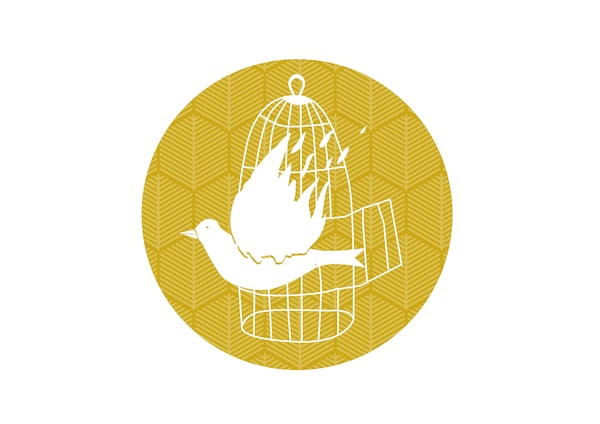
In an email interview with the Globe and Mail, Maria Bilinska discussed her 'gold city' design theme and creating art in a time of devastating conflict in Ukraine.Handout
“Art is a kind of therapy in this war,” says Maria Bilinska, who lives near the Polish border in Lviv. In the first days after Russia invaded Ukraine, the graphic designer and illustrator did little other than watch the news on television. Then she began creating posters about the war. “It was very helpful mediation.”
Bilinska’s first major project after the invasion was to design the cover art for the Ukrainian edition of Sailing to Sarantium, a historical fantasy novel about an artist’s journey through wild and dangerous lands. First published in 1998, it was written by bestselling Canadian author Guy Gavriel Kay.
In an email interview, she discussed her “gold city” design theme and creating art in a time of devastating conflict.
Sailing to Sarantium is the first book in the author’s two-part The Sarantine Mosaic. How did having a mosaicist in the story influence your cover design?
Mostly in the colour palette. I love how the author describes the passion of the mosaicist’s works, how light influences an image he creates. It’s very poetic, and it is why I choose yellow, almost gold, for the cover. When I read a book to create a cover for it, I think in slightly different categories than the average reader. I think in visual way. Historic events aren’t as important as, for example, the amazement of the main character with the mosaic in a chapel or the part about a golden tree and mechanical birds.

Did the current war in Ukraine have any effect on design ideas?
Sailing to Sarantium was the first book I read after Feb. 24, when Russia invaded Ukraine. And it’s interesting thing, not only in my case, but a lot of my friends too – I couldn’t read anything bigger than an article. All my thoughts were about news from war. I couldn’t switch it off. So, I spent more time than usual reading this book and feeling its atmosphere.
Do you live in a dangerous area of the country?
We are relatively safe, but we have air alarms and a few missile attacks. People here are trying to learn how to live in a new reality. We help refugees from eastern and southern parts of Ukraine. Some of them lived in our country house for a while.
Aside from reading the book, what kind of research did you conduct?
Everything began with reading a book and noting details and my impressions, etc. Then I read about mosaics and Byzantine churches, and looked at different mosaics from Hagia Sophia, a mosque in Istanbul. We have mosaics in St. Sophia Cathedral in Kyiv too.
Did you go with your first impressions when conceiving the design theme?
The first cover idea was to use the story about mechanical birds, which, in my opinion, is a very powerful metaphor in this book. But after a conversation with the publisher we decided to go with a travel theme, gold city. The style of the cover is modern, but I included a small ship which was depicted from an ancient mosaic. In this way, past and present are combined.

In general, what are your thoughts on what a book’s cover illustration needs to accomplish?
I believe it must build a new, parallel line of the book’s story, not depict exactly what happened in it. This is more interesting for the readers, because they can see the story from different points of view – author, illustrator and their own.
The author of the book, Guy Gavriel Kay, praised your work, saying that art in a time of a brutal invasion is hard. Can you talk about that?
First of all, I want to say, that Ukrainian publishers who publish new books now are heroes. Almost 90 per cent of big printing shops in Ukraine are located in Kharkiv, near the Russian border. The city is bombed often and has sustained a lot of damage to its infrastructure. Printing shops are destroyed. Also, we have problems with paper. Yet, in this hard time, publishers create and publish new books. I think it’s amazing.
We see the footage, but I don’t think people here get a sense of the day-to-day lives of Ukrainians.
It’s really hard logistically, because a lot of workers are fighting in the war. It’s hard in a financial way, but it’s hard emotionally too. Every Ukrainian have the same thought: “Is my work important and needed when hundreds of people are dying right now?”
And your answer?
Art, especially books, is a very important tool in this war. Because we are fighting a cultural war too. Russia has tried to appropriate our culture for years, and we can’t stop even for a minute in this war.
This interview has been condensed and edited.
Expand your mind and build your reading list with the Books newsletter. Sign up today.
 Brad Wheeler
Brad Wheeler